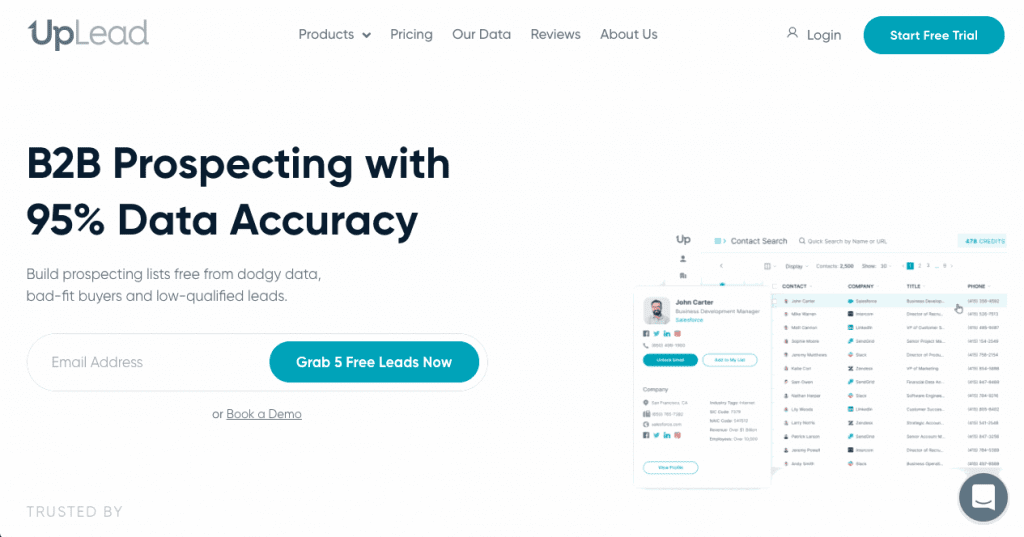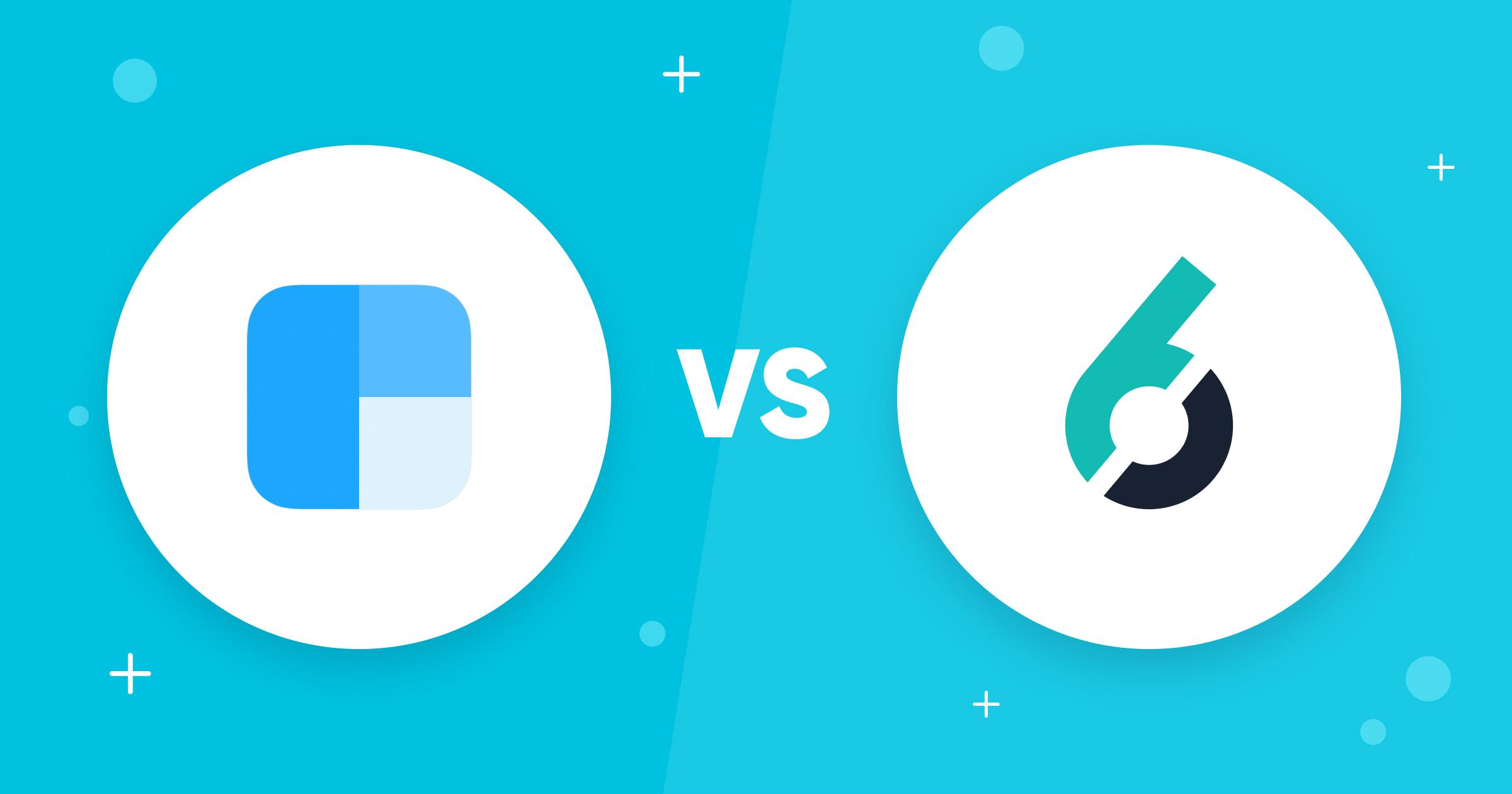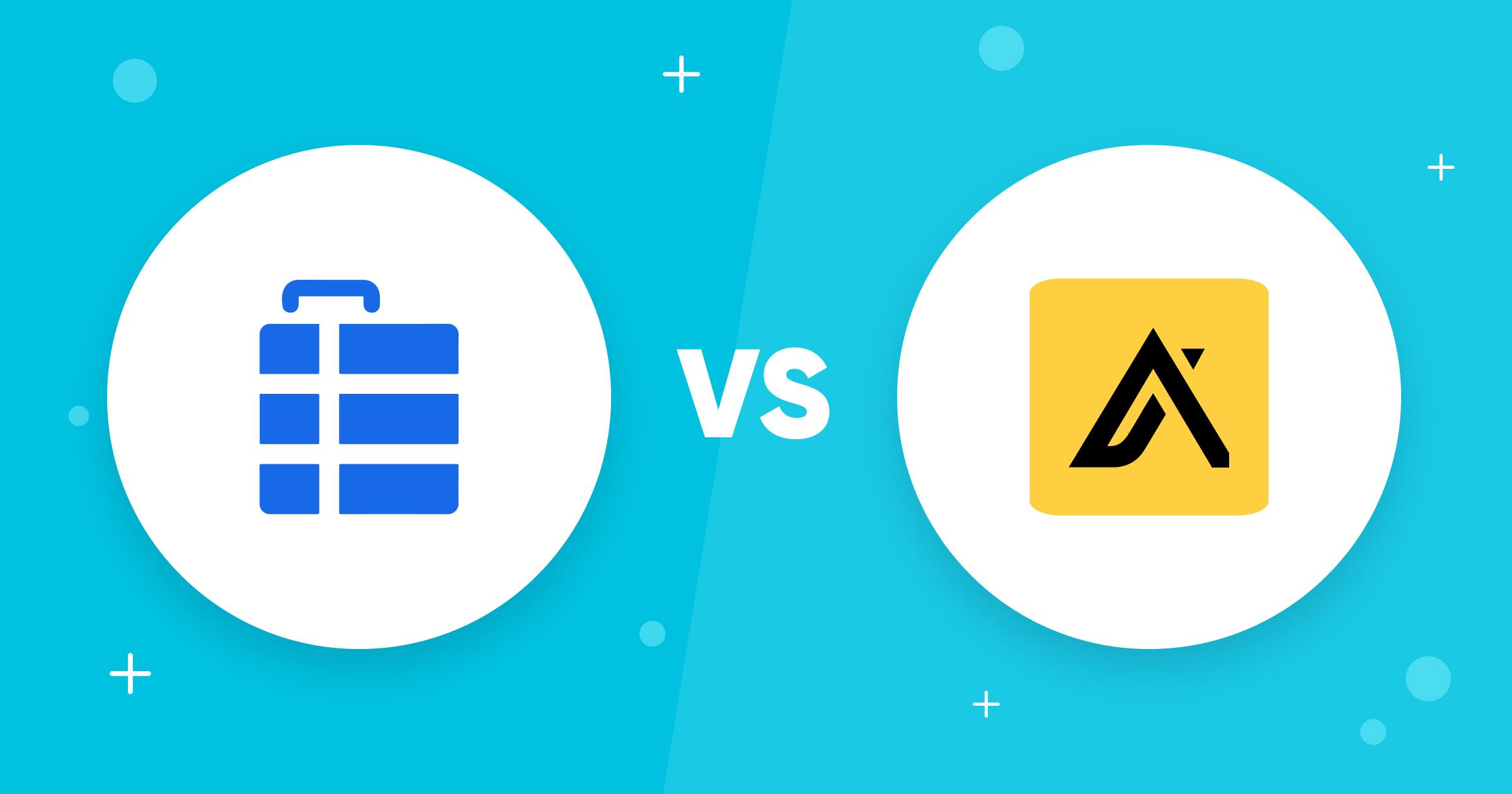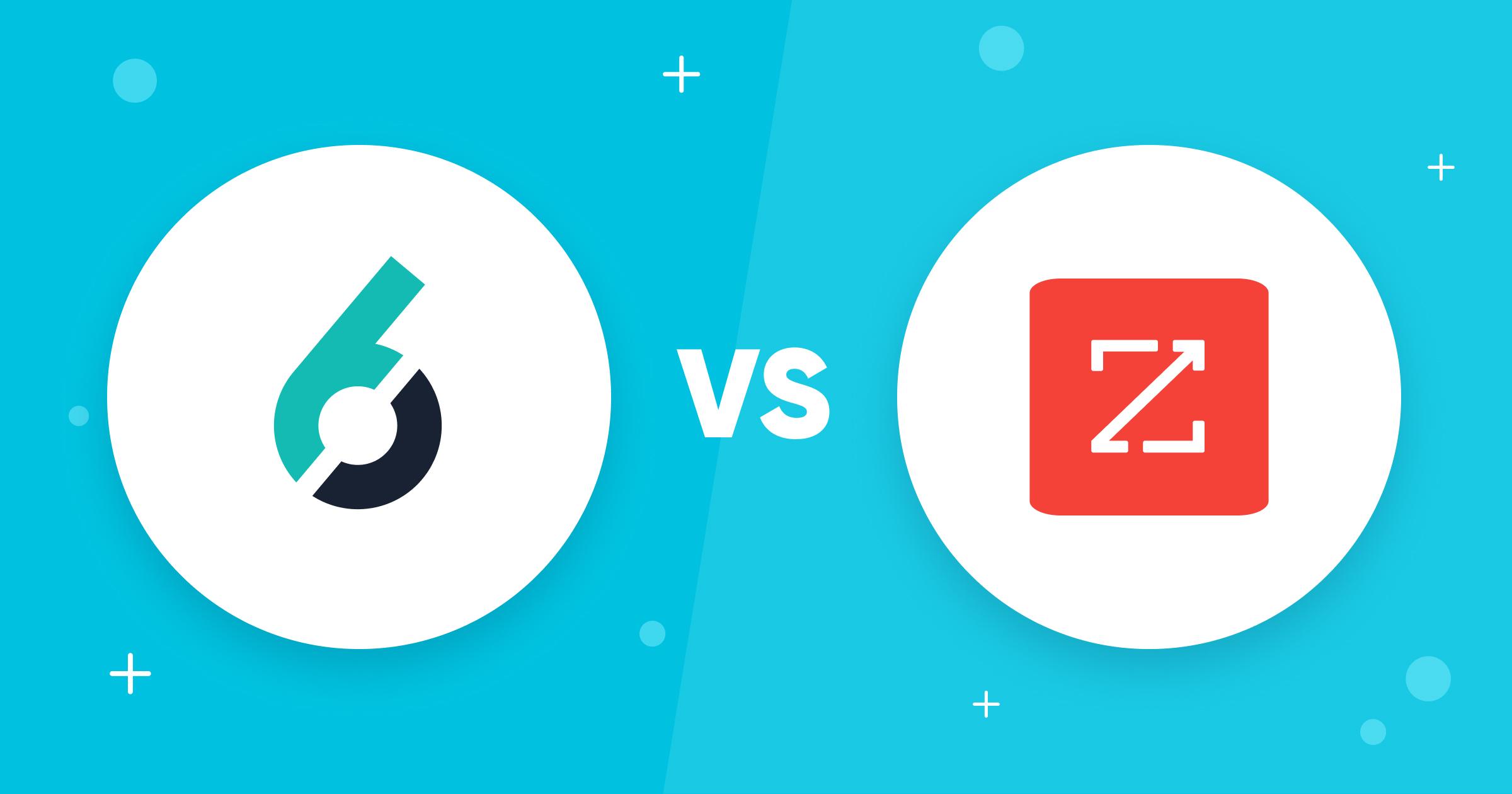Inbound vs. outbound sales. Which strategy is better? It’s the sales debate that has raged on for decades. What are they? How do they differ from one another? Which is ideal for your business? This article will cover everything you need to know, including the following:
- The main difference between inbound and outbound sales
- What are inbound sales?
- Inbound sales strategies
- When to use inbound sales
- What are outbound sales?
- Outbound sales strategies
- When to use outbound sales
- How UpLead can skyrocket your sales
- Frequently asked questions
Let’s get started.
Inbound vs. Outbound Sales: The Main Difference
So, what exactly is the difference between inbound sales and outbound sales? Both strategies are viable and heavily used by sales teams in various industries today. Companies utilize them to generate more sales and revenue successfully.
Before outlining the difference between inbound sales and outbound sales, we should first define each.
Inbound sales are sales that come to you. Prospective customers will contact your company to inquire about your products or services. This interaction develops due to an inbound marketing strategy that focuses on helping a target audience by offering valuable content.
Outbound sales are sales that are generated through outreach. Your company’s sales reps reach out to prospective customers and proposition them on your products and services.
Simply put, the main difference between inbound and outbound sales is who initiates the interaction.
With inbound, the prospective customer will get in touch with you. They have a problem or pain point and believe you can help. On the other hand, outbound is more like traditional advertising– your sales rep reaches out to a targeted potential buyer.
Both inbound and outbound are proven strategies for acquiring customers and generating revenue. However, which is more appropriate depends on several factors, such as the company’s industry.
Inbound sales is more appropriate for new startups and smaller businesses with a limited budget. It’s ideal if you require brand exposure and need to build consumer confidence. It’s also more suited to companies that sell cheaper products or services.
Outbound sales is more appropriate for larger, established companies that sell higher-ticket products to enterprise clients. It’s better if you need immediate results and or feedback. Outbound sales prospecting is a strategy that requires greater budgets.
Lead generation doesn’t have to be all that painful. With UpLead, you can easily connect with high-quality prospects and leads to grow your company.

What is Inbound Sales?
Inbound sales is a business method that uses several marketing strategies to attract, nurture, and qualify prospective customers. These tactics include content marketing, search engine optimization, email marketing, and social media marketing.
What differentiates inbound sales from outbound sales is who initiates the sales engagement process. Prospective customers will contact your sales team when interested in your brand and its products and services. Outbound is different; a sales rep makes first contact.
The inbound sales method has become dramatically more popular in the 21st century, especially in the last ten years. This popularity has had much to do with the progress of the internet, smartphones, and social media.
There are some inherent benefits to inbound sales. It’s cost-effective, and suitable for new startups and small businesses with low budgets. However, it can be time-consuming, taking several months or even years to see benefits, and you need to create content for inbound to work.
To gain a greater understanding of how the inbound sales process works, we’ve broken it down into four steps below:
- Step 1 — Identify Potential Customers: Inbound sales start with attracting prospects and converting them into leads by capturing contact information. An example would be a website visitor from Google filling out an opt-in form to gain access to a lead magnet/content download.
- Step 2 — Connect with New Leads: Now that you’ve got the contact information of a lead that’s shown interest, you can begin to nurture them. This can involve more specific content tailored to their individual needs, and your product or service is positioned as a viable solution. This step is all about qualifying your lead to determine if they’re a good fit for your product or service.
- Step 3 — Explore Possibilities: Your lead has passed the screening process and is considered a qualified lead, meaning they’re a suitable candidate for your product or service. You now attempt to nurture them with content specific to their problems and pain points.
- Step 4 — Advise an Action: At this point, you’ve qualified and nurtured your lead. They’re a good fit for your product or service. The lead is sales-qualified and ready for a strong sales pitch, which usually covers benefits, features, and pricing. Sales demos and sales calls are made, and if successful, your sales rep will close the deal and turn the lead into a paying customer.
Inbound Sales Strategies
There are several inbound marketing strategies that you can use to build a pipeline of inbound sales for your company. These methods will help solve your target audience’s problems and pain points. They attract and nurture prospects and allow you to close them into customers.
Four of these inbound sales strategies are listed below.
Create Great Content
The core of every great inbound marketing strategy is content creation. This content is produced in several formats and distributed through various channels. Your company’s website and social media profiles are the two most important.
You should create blog posts and guides optimized for SEO and rank for long-tail keywords on Google. This will bring visitors to your website from your target audience, and these individuals have the right search intent and have the potential to become future customers.
Your social media profiles are also important channels for creating content. You can build large organic followings on platforms like Facebook, LinkedIn, YouTube, Instagram, Twitter, and TikTok. You can funnel these audiences to your website or exclusive content like webinars.
Creating content works because you’re offering free value to your target audience and helping them with their problems and pain points. They become familiar with your brand and its products or services.
Host a Webinar
Webinars are virtual events that provide an audience with exclusive information. The audience can interact in several ways, such as by asking questions or responding to polls. Webinars can be hosted by one person or a panel of experts. They can be broadcast live in real-time, or they can be pre-recorded.
Webinars are valuable tools for inbound sales. They can be used as lead magnets to capture contact information and convert prospects into leads. They can also be used to nurture further and qualify an existing lead.
Webinars are an effective way to share in-depth information. A blog post or video can only cover so much, whereas a webinar can cover a topic or issue more extensively. Live webinars also have the potential to offer real-time interaction.
Email Marketing
Email marketing is one of the most critical components of inbound sales, helping to convert prospects into leads and then nurture leads into paying customers. It should be used as an extension of your content marketing.
Email messaging works because it is a personal communication channel. It’s also the most effective marketing channel; however, getting people to subscribe to your email list is challenging. You should use lead magnets like webinars and content downloads to capture their contact info.
Offer Freebies
Providing free value is one of the core elements of the inbound sales process. To attract potential prospects who may become customers, you need to help them. Create content that helps solve their problems and remedy their pain points.
For instance, freebies in lead magnets/content downloads on blog posts are used to capture contact information. It works because we intuitively like free things, and it’s one of the best ways to convert your website visitors into email subscribers.
When to Use Inbound Sales
All companies should have an inbound sales strategy; however, some might be more suited to inbound than outbound. Want to know if your business is more suited to inbound sales? There are several indicators that you should look for. We’ve listed four of them below.
In the Start-Up Phase
New startups and smaller businesses low on capital are best suited to inbound sales. Outbound sales prospecting requires more budget, whereas inbound is more cost-effective.
When You Want Brand Exposure
One of the great things that inbound sales do well is brand exposure. It uses digital marketing channels like search engines (SEO) and social media to reach large audiences of people. You can get your company recognized by your target audience.
If it’s a Quick Purchase
Is your product a high-ticket item that costs thousands of dollars? Then, you might have more luck selling it with outbound sales prospecting. Inbound sales methods are great for cheaper products or services with a simpler buyer’s journey and only one decision-maker in the purchasing process.
When You Want to Build Trust
An inbound sales strategy builds authority, credibility, and trust. You’re creating valuable content that helps your target audience, allowing you to show off your expertise and position your brand as an industry thought leader.
What are Outbound Sales?
Outbound sales is a business strategy that uses outreach to generate sales and revenue. It’s also referred to as sales prospecting. It includes outreach tactics like cold calling, cold emailing, and live chat. It also has paid advertising methods.
How the sales engagement process occurs makes outbound sales different from inbound sales. A sales rep will reach out to a prospective customer in outbound sales. This is different to inbound, which involves the prospective customers making contact when they’re ready.
Many people falsely assume that outbound sales prospecting is ineffective and outdated. They consider it intrusive and easily ignored; however, many companies use strategies like cold calling and cold emailing to accumulate new customers and generate revenue.
Outbound sales strategies offer several things that inbound sales don’t. For starters, because it’s outreach, it’s highly targeted. You can identify prospective customers who are perfect fits for your sales cycle. Outbound is also more personal and provides immediate results and feedback.
Let’s break it down to help you understand how the outbound sales process works. There are five general phases:
- Step 1 — Identify Potential Customers: Outbound prospecting starts with identifying your ideal target market and buyer personas. This information is critical as it ensures you’re targeting the right prospects.
- Step 2 — Generate Quality Leads: The next step involves uncovering key decision makers and their contact information, which includes business email addresses, direct dials, and mobile numbers. A B2B lead generation company like UpLead can help with this process.
- Step 3 — Conduct Outreach & Qualify Leads: Once you’ve attained contact information, you can reach out and contact your prospects. The purpose here is to nurture your leads and qualify them with a “soft” sell so they’re ready for a stronger sales pitch. This stage is about weeding out the leads that don’t have any interest in your product or service.
- Step 4 — Make Your Pitch: You should have a list of qualified candidates after the outreach and prospecting. These people are now ready for a strong sales pitch, usually a sales demo or a sales call describing the finer details of your product or service. These details include benefits, features, and pricing.
- Step 5 — Close the Deal: If the strong sales pitch goes well, your sales rep can close the deal.
Outbound Sales Strategies
Your company can use several time-tested outbound sales tactics to attract more customers. These strategies are forward and direct, and their success hinges significantly on the quality of your leads.
We’ve listed four of these outbound sales strategies below.
Invest in High-Quality Leads
The quality of your leads largely determines the success of your outbound sales efforts. Strategies like cold calling, emailing, and live chatting are useless if you’re not targeting the right people. No matter how hard your sales reps try, they won’t be able to turn them into paying customers.
All outbound sales is outreach, and finding the right people to reach out to comes first.
Finding high-quality leads is called lead sourcing, and it can be a time-consuming activity that costs money and resources. There are several ways that businesses can find prospective customers, like through social media and directories.
One of the best ways is to use a B2B lead generation tool like UpLead.

UpLead is a cloud-based B2B lead generation platform that makes it easy to find high-quality prospects. It has a 160+ million contact database, includes business emails, direct dials, and mobile numbers. A 95% accuracy guarantee also backs the data.
Businesses can create targeted prospect lists with a tool like UpLead. There are over 50+ search filters, including firmographic and technographic data. There’s also purchase intent data and a real-time email verifier.
UpLead makes it easy to find the contact information of your perfect prospective customers. It’s the ultimate fuel to supercharge your outbound prospecting efforts.
Lead generation doesn’t have to be all that painful. With UpLead, you can easily connect with high-quality prospects and leads to grow your company.

Send Personalized Cold Emails
Cold emailing is one of the staples of modern outbound sales prospecting. However, many consider it an ineffective strategy in today’s landscape, that couldn’t be further from the truth. Many companies are still running successful cold emailing campaigns.
The key is to personalize each email as much as possible. This may take more time, but it’s worth it. For example, add their name to the subject line or use their current needs in your introduction.
Tailor Your Cold Calling Script
Cold calling is an age-old sales strategy that still works even today. Cold calling is involved in the sales process of many high-ticket products geared toward enterprise clients. These deals are extensive and involve a lot of decision-makers in the buying decision.
A great sales rep can make a difference when closing deals over the phone. However, you can’t simply rely on great talent.
Use Live Chat
Live chat is another way to engage with your target audience directly. Real-time messaging lets you interact with prospective customers at crucial moments of the buyer’s journey. Live chat software can be used for your website to prompt new visitors.
When to Use Outbound Sales
Outbound sales strategies can be used for several companies and in several scenarios; however, not all businesses are a suitable fit. We’ve listed some key indicators that suggest your company is a good candidate.
If You Have an Expensive Product
Businesses that sell more expensive products are more likely to find success with outbound methods like cold calling. High-ticket products generally target enterprise-level, have longer sales cycles, and have more decision-makers involved in purchasing.
When You Need to Engage With Prospects
Inbound sales methods are quite passive and take a longer time to develop. For some strategies, such as SEO, this can last several months. On the other hand, outbound sales strategies happen fast. The sales engagement process is initiated in minutes.
When You Want Immediate Feedback
One of the great things about outbound is that it’s far quicker at getting results and feedback. Strategies like cold calling and live chatbots allow you to engage prospects in real time, making it possible to gauge consumer sentiment and level of engagement.
If You Have the Budget for Sales Reps
Outbound sales strategies generally require more of a budget than inbound sales, whether ad spend for digital advertising or salary and commissions for sales reps. The margins are larger and more profitable when selling more expensive products.
The deals are bigger and involve more key decision-makers. A great salesperson can differentiate between closing a deal and losing out on a client. Outbound sales success relies heavily on your sales team’s talent.
Use UpLead to Skyrocket Your Sales Process
Finding quality leads is one of outbound sales’s biggest and most time-consuming parts. You must find the right prospects to target before starting cold outreach campaigns. This lead-sourcing process can be simplified using a B2B lead generation tool like UpLead.

UpLead is a cloud-based B2B lead generation platform that easily finds other businesses to sell to. The web-based tool offers its customers a massive B2B contact database. It features over 160+ million B2B contacts, including direct dials, mobile numbers, and business email addresses.
Companies can use UpLead’s robust suite of features to sift through the database and create targeted prospect lists. There are over 50+ search filters, including firmographic and technographic data, and you can source the right leads to fuel your outbound efforts.
UpLead should be considered by any business looking to grow with outbound sales processes, including several types of businesses from various industries. UpLead is ideal if your company uses cold email or cold calling to generate leads.
Lead generation doesn’t have to be all that painful. With UpLead, you can easily connect with high-quality prospects and leads to grow your company.

FAQs about Outbound vs. Inbound Sales
Neither inbound nor outbound is better than the other; they’re simply different tools for businesses to use. Outbound is better for short-term growth but is more expensive in the long run. Inbound takes longer to see results but is more cost-effective.
Outbound sales are easier to generate but more expensive to acquire. Inbound sales require a long-term commitment to a pull marketing strategy. Although more cost-effective, it typically takes several months to start seeing results.
Cold calling isn’t an inbound sales strategy but an outbound one. Inbound sales are generated from pull marketing methods, such as content marketing, SEO, social media, and email marketing. Cold emailing, paid advertising, and cold calling are outbound sales strategies.
Outbound sales are sales generated from push marketing tactics, such as paid advertising, cold emailing, and cold calling. Compared to inbound sales, the main difference is that your sales reps initiate the interaction by reaching out to the prospect.
What You Need to Remember About Outbound vs. Inbound Sales
Outbound or inbound? That’s the pressing question that this article hopefully helped answer. We covered both sales strategies, how they differ, specific tactics you can apply, and when to use them.
Regardless of the nature of your company or industry, you should be able to find a sales strategy that works. Smaller businesses and new startups that sell cheaper products or services will be more suited to inbound. Companies that sell high-ticket items to enterprise clients will find success with outbound prospecting.









